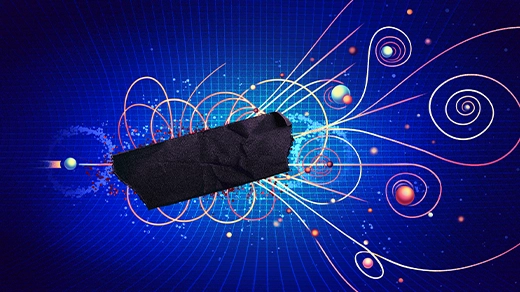Consider the Higgs boson — the latest fundamental particle to be discovered, in 2012 — which lives for less than a billionth of a billionth of a second and can travel less than a millionth of a millionth of a meter. Compared to those tiny scales, the physicists operating the particle colliders that momentarily give rise to Higgs bosons exist for long, long times at distances far, far away. This far-off perspective is captured by the S-matrix.
To see how the S-matrix works, imagine that, instead of making particles collide, you throw dice. With one die, you have six possible outcomes and a 1/6 probability of rolling each one. With two dice, you have 12 possible outcomes with differing probabilities.
Now chart the probabilities in a table. Each entry in the table displays the probability of rolling a certain number with a given number of dice. The table is called a matrix.
What that matrix does for dice, the S-matrix does for particles. Each row is a choice of initial particles, like the number of dice. You might start with a Higgs boson traveling alone, or with an electron and a positron. Each column is an output: The Higgs might morph into a pair of W bosons, or (more likely) a pair of quarks. Each entry is the probability of observing a given output.
(In quantum theory, each entry is a complex number, a value that may include the “imaginary” square root of −1. You use the absolute value to get familiar probabilities.)
If you could calculate a table of probabilities like this, Heisenberg reasoned, you could check a theory against experiments. As the next century would show, though, you could do more. By studying the S-matrix, Heisenberg and his intellectual descendants would study, in general, how physics ought to be.
Logical Predictions
After the 1940s, physicists realized they didn’t need a revolution after all. They learned how to better use a formula, known as a Lagrangian, that specified all the particles that might come into being during a collision and how they might interact with each other. The formula could be used to infer what was really happening during a collision, even during the unobservable interim moments. With this deeper understanding, physicists could sidestep the problematic infinities and wade straight into the fray of a particle collision.
But in the 1960s, quantum theory failed physicists once again. Experiments had uncovered a dizzying array of new particles resembling protons and neutrons, but with a wide assortment of masses and charges. A complete Lagrangian would need to account for this multitude of “hadron” particles, but their sheer numbers were overwhelming. Paolo Di Vecchia, an emeritus professor at the Nordic Institute for Theoretical Physics, recalled the sentiment of the time. “Should we write a Lagrangian containing all the hadrons? It did not seem the thing to do.”
Once again, physicists dreamed of revolution. Soon enough, Geoffrey Chew, a physicist at the University of California, Berkeley, championed an audacious new approach. He and his followers hoped to ignore the complicated hadron interactions that might arise only momentarily during a particle collision. Instead, they would focus on the outcomes that could be observed in a detector.
“From Berkeley came the idea that we should forget Lagrangians,” Di Vecchia said, “and try to construct directly the S-matrix: that is, the quantity more directly related to experiments.”
>>> Read full article>>>
Copyright for syndicated content belongs to the linked Source : Quanta Magazine – https://www.quantamagazine.org/the-s-matrix-is-the-oracle-physicists-turn-to-in-times-of-crisis-20240523/































